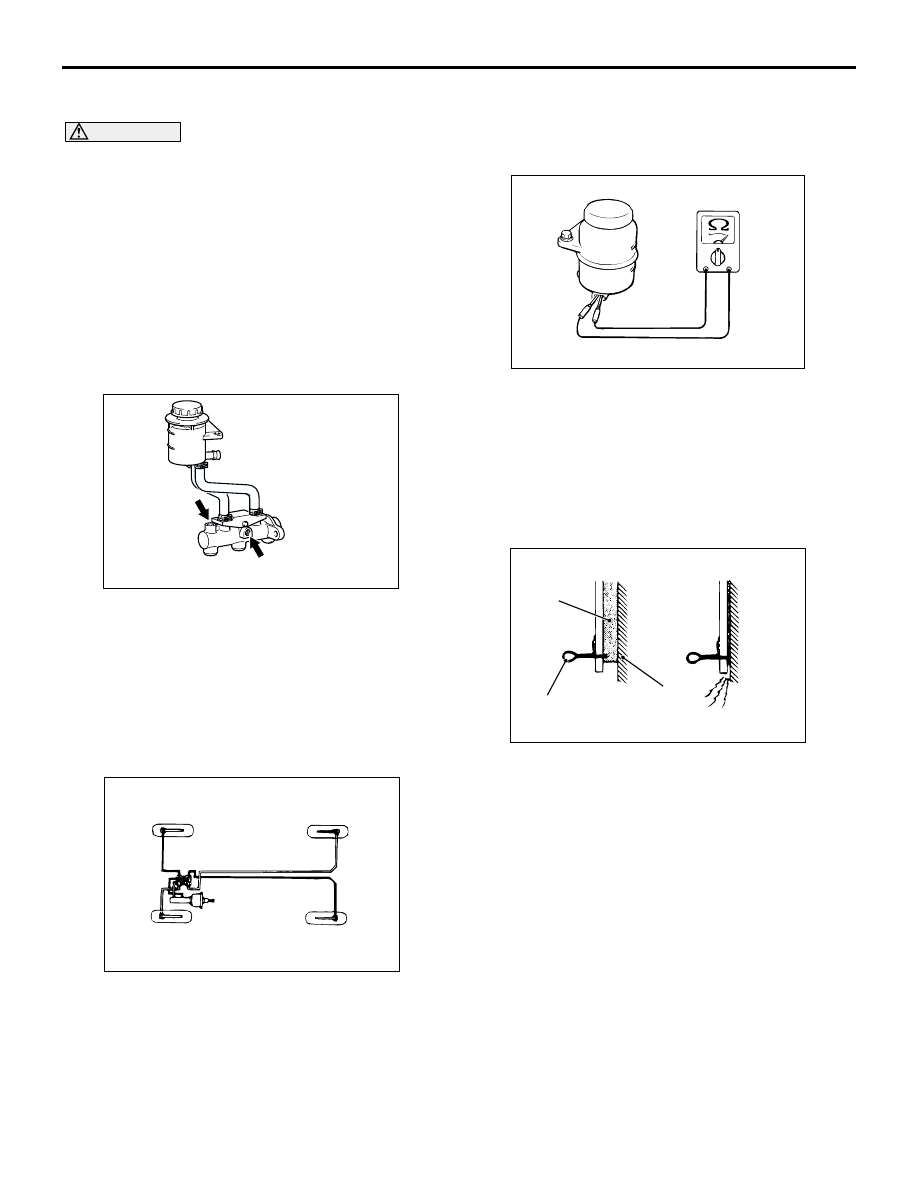Mitsubishi Outlander (2003+). Manual - part 259

ON-VEHICLE SERVICE
BASIC BRAKE SYSTEM
35A-7
BLEEDING
M1351001400400
CAUTION
Use only brake fluid DOT 3 or DOT 4. Never mix
the specified brake fluid with other fluid as it will
influence the braking performance significantly.
MASTER CYLINDER BLEEDING
The master cylinder used has no check valve, so if
bleeding is carried out by the following procedure,
bleeding of air from the brake pipeline will become
easier (When brake fluid is not contained in the
master cylinder).
1. Fill the reserve tank with brake fluid.
2. Keep the brake pedal depressed.
3. Have another person cover the master cylinder
outlet with a finger.
4. With the outlet still closed, release the brake
pedal.
5. Repeat steps 2
−
4 three or four times to fill the
inside of the master cylinder with brake fluid.
BRAKE LINE BLEEDING
Start the engine and bleed the air in the sequence
shown in the figure.
BRAKE FLUID LEVEL SENSOR CHECK
M1351009100351
The brake fluid level sensor is in good condition if
there is no continuity when the float surface is above
"MIN" and if there is continuity when the float surface
is below "MIN".
DISC BRAKE PAD CHECK AND
REPLACEMENT
M1351002300343
NOTE:
The brake pads have indicators that contact the
brake disc when the brake pad thickness becomes 2
mm, and emit a squealing sound to warn the driver.
AC301227AB
Outlet
Outlet
AC301228AB
4
2
1
3
AC102357
AC000879
When new
When worn
AD
Pad
Wear indicator
Brake
disc